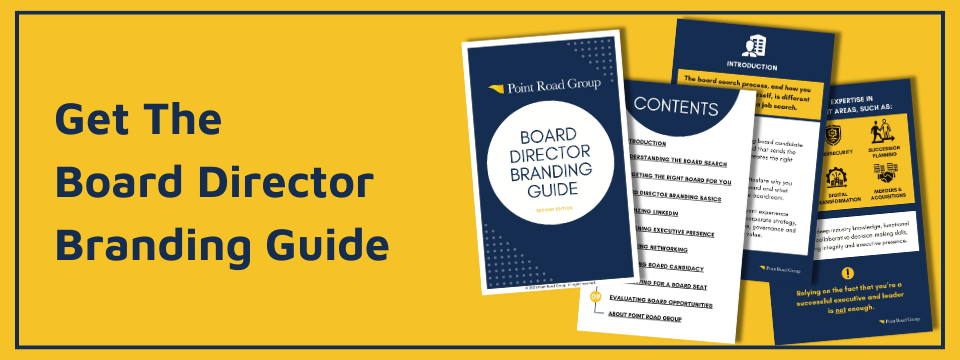
Get started with Point Road Group's Board Director Branding Guide.
With this helpful resource, you will:
Complete the form below to receive your eBook today.
You've come to the right place to get your executive brand ready for a board search.
Through our Board Director Branding Services, Point Road Group supports first-time and experienced directors of public and private companies as well as nonprofits and advisory boards. The practice is led by our Founder and CEO, Alyssa Gelbard, an expert in executive branding and frequent speaker on communicating your value and brand for a board search.
Contact us to learn more.
Editor's note: This post was updated on August 31, 2023.